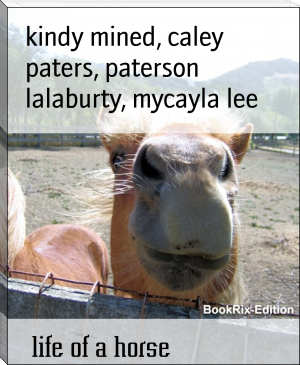Ant - Logiee22 (novels for students txt) 📗

- Author: Logiee22
Book online «Ant - Logiee22 (novels for students txt) 📗». Author Logiee22
Ants are common insects, but they have some unique capabilities. More than 10,000 known ant species occur around the world. They are especially prevalent in tropical forests, where they may be up to half of all the insects living in some locations.
Ants look much like termites, and the two are often confused—especially by nervous homeowners. However, ants have a narrow "waist" between the abdomen and thorax, which termites do not. Ants also have large heads, elbowed antennae, and powerful jaws. These insects belong to the order Hymenoptera, which includes wasps and bees.
Enthusiastically social insects, ants typically live in structured nest communities that may be located underground, in ground-level mounds, or in trees. Carpenter ants nest in wood and can be destructive to buildings. Some species, such as army ants, defy the norm and do not have permanent homes, instead seeking out food for their enormous colonies during periods of migration.
Ant communities are headed by a queen or queens, whose function in life is to lay thousands of eggs that will ensure the survival of the colony. Workers (the ants typically seen by humans) are wingless females that never reproduce, but instead forage for food, care for the queen's offspring, work on the nest, protect the community, and perform many other duties.
Male ants often have only one role—mating with the queen. After they have performed this function, they may die.
Ants communicate and cooperate by using chemicals that can alert others to danger or lead them to a promising food source. They typically eat nectar, seeds, fungus, or insects. However, some species have diets that are more unusual. Army ants may prey on reptiles, birds, or even small mammals.
One Amazon species (Allomerus decemarticulatus) cooperatively builds extensive traps from plant fiber. These traps have many holes and, when an insect steps on one, hundreds of ants inside use the openings to seize it with their jaws.
Another species, the yellow crazy ant (Anoplolepis gracilipes), is capable of forming so-called supercolonies that house multiple queens. On Australia’s Christmas Island, the accidental introduction of yellow crazy ants in the early 20th century has led to a destructive infestation. The ants are a significant threat to the island’s endemic population of red crabs, which are displaced by the ants from their burrows or killed as they pass through ant nest sites during the crabs' large-scale annual migration from the forest to the coast.
FAST FACTS
Type:Bug
Diet:Omnivore
Average life span in the wild:Several weeks to several years
Size:0.08 to 1 in (2 to 25 mm)
Group name:Army or colony
Did you know?Ants can lift and carry more than three times their own weight.
Size relative to a paper clip:
Publication Date: 05-23-2011
All Rights Reserved





Comments (0)